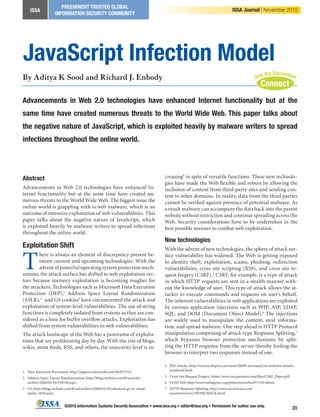This document discusses how advancements in Web 2.0 technologies have created security threats to the World Wide Web. It focuses on the negative exploitation of JavaScript, which is heavily used by malware writers to spread infections online. The document describes the JavaScript Infection Model (JIM), which outlines the typical methods used by attackers to inject malware onto websites. These include using an attacker-controlled domain to host malware, exploiting vulnerabilities to inject malicious JavaScript onto legitimate sites, and using JavaScript's abilities to conduct stealth attacks and spread the infection across multiple domains.




